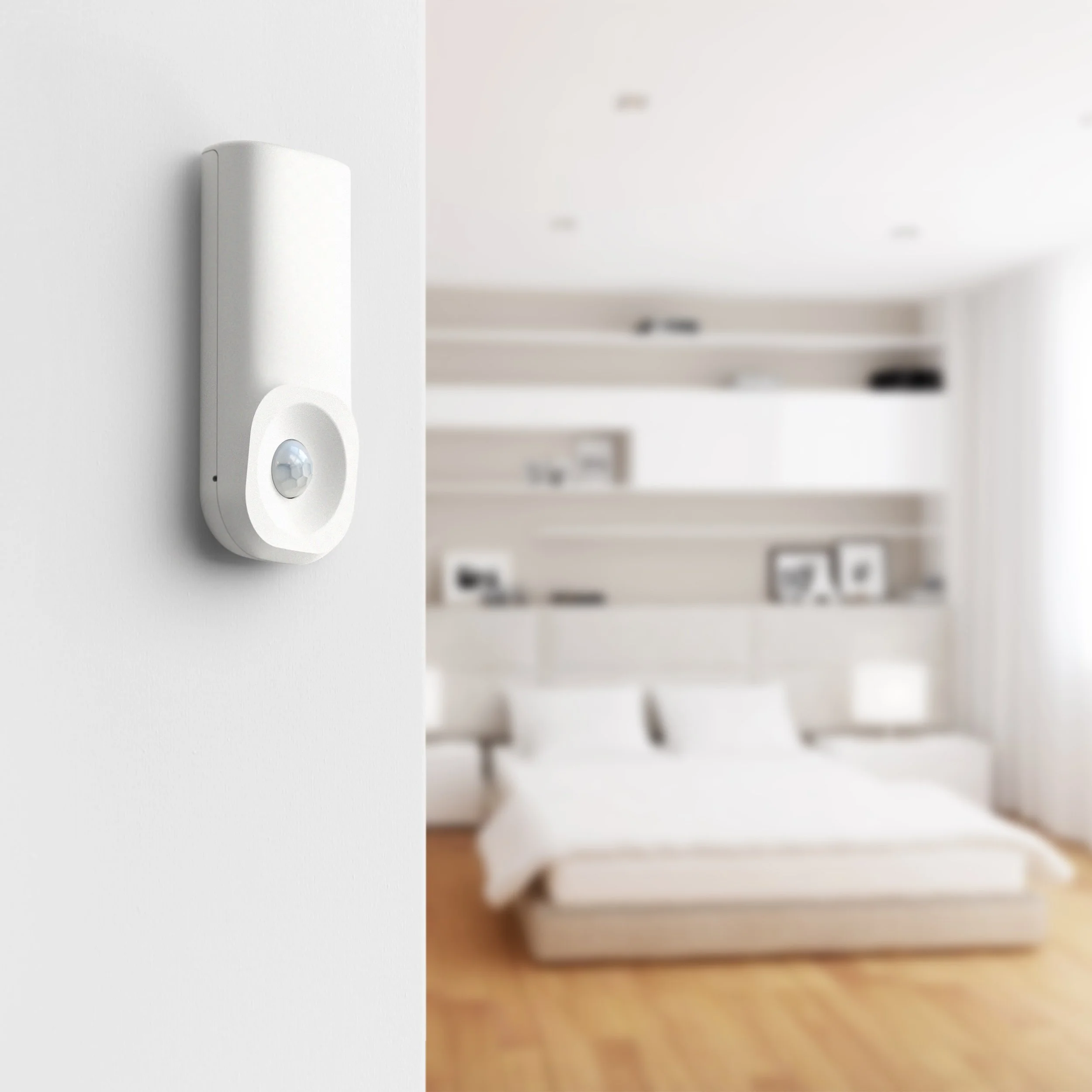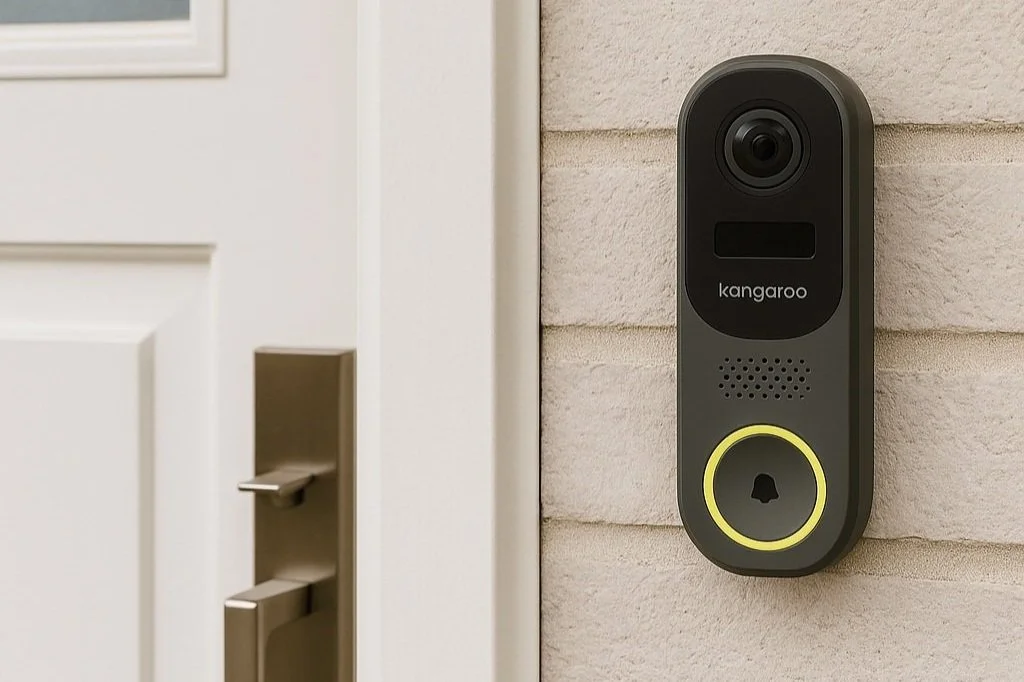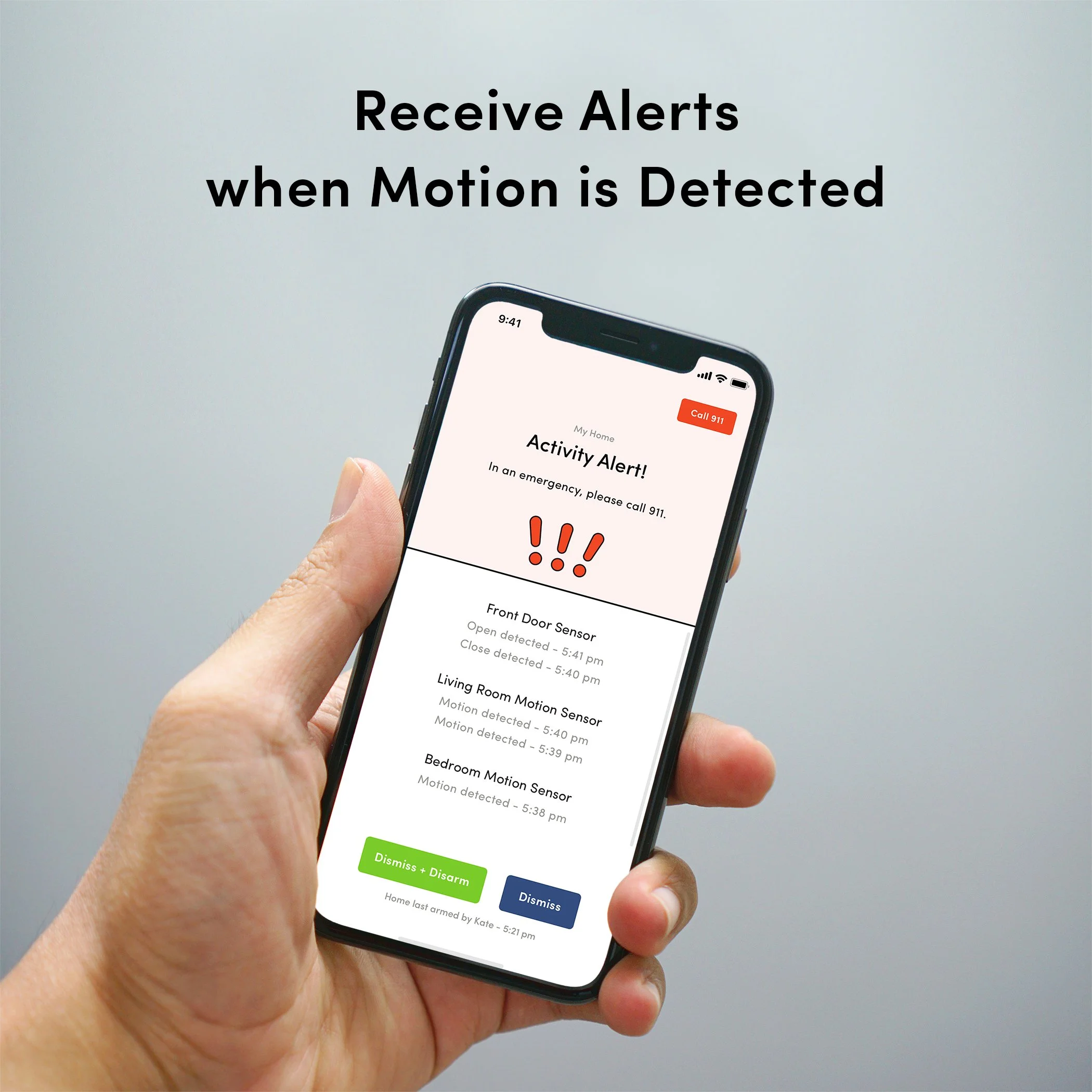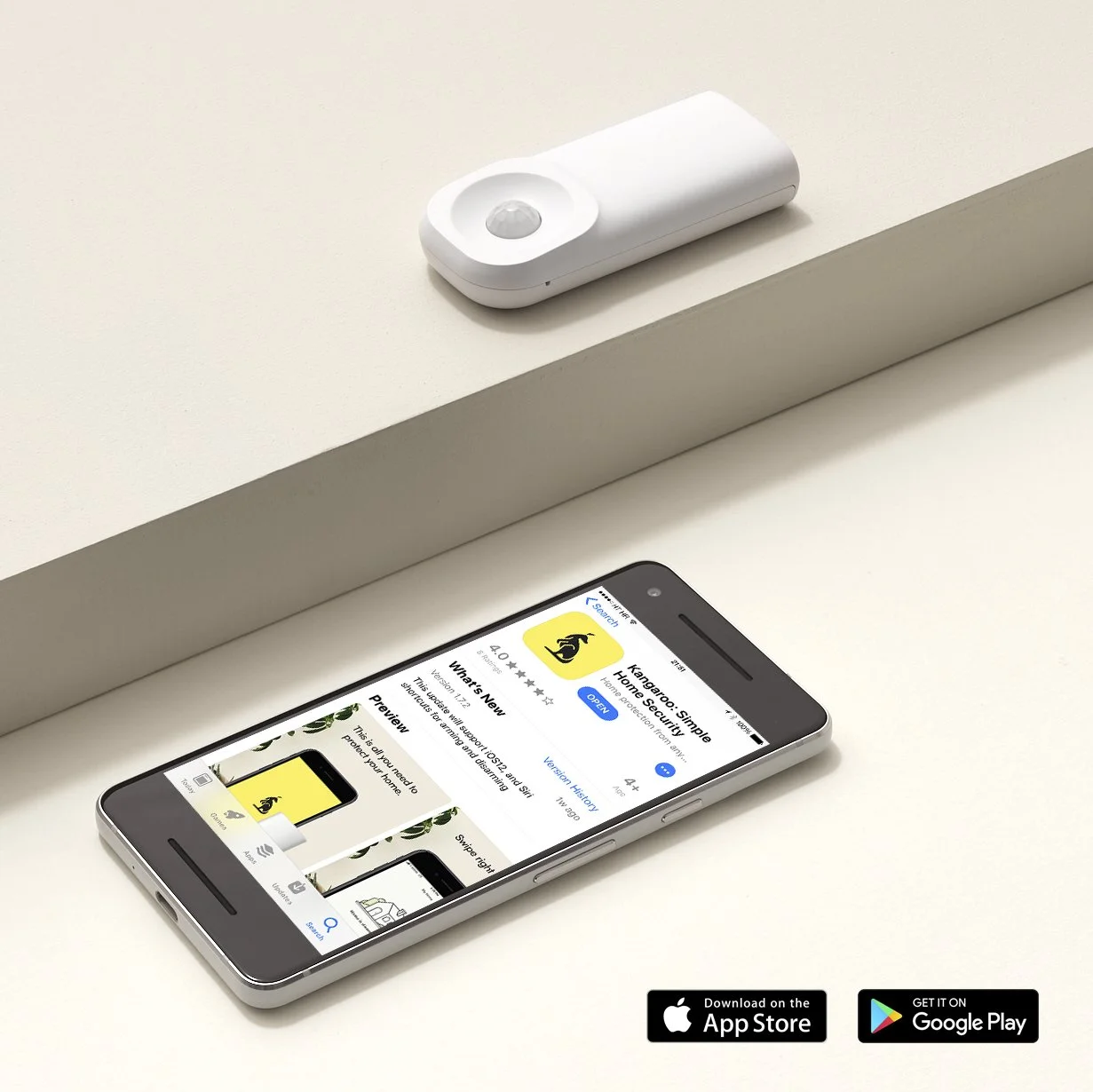Tiny Home, Big Security: A Guide to Protecting Your Smallest Asset
Living in a tiny home is the ultimate expression of freedom. It’s about minimalism, financial savvy, and the ability to live a life less ordinary. But whether your tiny house is on a foundation in the woods or on wheels ready for the next adventure, that freedom comes with a unique set of security challenges. How do you protect your minimalist masterpiece from threats, big and small?
The good news is that securing a small house doesn't require a big, complicated, or expensive system. It requires a smart, efficient, and flexible approach—principles that every tiny home owner already lives by. This guide will walk you through everything you need to know about tiny home security.
The Unique Security Risks of Tiny House Living
Your tiny home isn't just a smaller version of a traditional house; it has distinct characteristics that change the security game.
Mobility: If your tiny home is on wheels (a THOW), the entire structure is a target for theft, not just the contents.
Location, Location, Location: Many tiny homes are situated in remote, rural, or
off gridlocations. This privacy is a huge perk, but it can also mean fewer neighbors to notice suspicious activity and longer response times from emergency services.Construction: While you have fewer doors and windows, they might be custom-built, making them potential weak points if not properly secured.
Power & Connectivity: For off-grid living, you need security solutions that sip power, run on batteries, and can operate reliably with potentially limited internet connectivity.
Building Your Tiny Security Blueprint
A great security plan is layered, starting with the physical and finishing with the smart.
Step 1: Fortify the Foundation
Before you add any tech, make sure your home's physical shell is solid.
Locks are Key: Invest in high-quality deadbolts for your doors. For sliding windows or barn doors, use secondary locks like pin locks or charley bars.
Hitch & Wheel Security: For THOWs, a heavy-duty hitch lock is non-negotiable. Wheel chocks and locks can also add a significant deterrent against would-be thieves.
Reinforce Your Views: Consider adding a security film to your windows. It’s an invisible layer of protection that makes the glass much harder to break. For more tips on physical hardening, the community at Tiny House Talk often shares practical, DIY-friendly advice.
Step 2: Add Smart, Simple Senses
This is where you gain true peace of mind. You need a system that alerts you to trouble instantly, no matter where you are. The entire Kangaroo ethos is built for the minimalist mindset: radically affordable, incredibly simple, and designed to fit your life, not complicate it.
Guard Your Entry Points: You don't need a sensor on every window in a tiny home. A single, well-placed Kangaroo Motion + Entry Sensor on your main door can do the job of two devices. It’s peel-and-stick, entirely wireless, and the batteries last for ages. If it detects motion or the door opening when the system is armed, it sends an instant alert straight to your phone.
Prevent Environmental Disasters: A tiny space can be wrecked by a small problem. A burst pipe or a failed plumbing connection can cause catastrophic damage in minutes. Place a Kangaroo Water + Climate Sensor in your bathroom or near your water hookups. It will alert you to the presence of water and also monitor for dangerous temperature drops that could lead to frozen pipes—a must for part-time or winter living.
Step 3: Get Eyes on Your Asset
A visible camera is one of the most effective deterrents you can have. And for a tiny home owner, the ability to visually check on your property from afar is invaluable.
Your Virtual Doorman: The Kangaroo Doorbell Camera lets you see and speak to anyone at your door, whether you’re inside or a thousand miles away. It gives you a clear view of your property’s approach and records clips when it detects motion, people, or a ring.
An All-Seeing Eye: For a broader view of your property or to keep an eye on things inside, the Kangaroo Indoor + Outdoor Cam offers ultimate flexibility. It's weather-resistant and can be used with a power cord or go completely wire-free with a rechargeable battery, making it the perfect
off grid security systemcomponent.
Your Tiny Home Security Toolkit
A quick glance at the best security solutions for compact living.
| Tiny Home Challenge | The Kangaroo Solution | Why It's Perfect for Tiny Living |
|---|---|---|
| Securing the main entry point | Motion + Entry Sensor | Tiny footprint, 2-in-1 functionality (motion and entry), and long battery life. |
| Risk of leaks or frozen pipes | Water + Climate Sensor | Prevents catastrophic damage in a small space. Monitors both water and temperature. |
| Needing a "virtual doorman" | Doorbell Camera | See and speak to visitors from anywhere. Adds a powerful visual deterrent. |
| Monitoring a remote property | Indoor + Outdoor Cam | Wire-free flexibility for off-grid placement. Check in visually for total peace of mind. |
| Total security & response | Complete Monitoring Plan | 24/7 professional monitoring to dispatch help, even if you miss an alert. |
For more information on finding reliable internet for your off-grid setup, CNET has a great guide to rural and satellite internet options.
Step 4: Upgrade to Professional Monitoring
What happens if you’re off the grid and miss an alert? This is where professional monitoring becomes a game-changer. With Kangaroo’s Complete Plan, if a sensor is tripped, our certified monitoring center will verify the alarm and dispatch emergency services on your behalf. It’s the highest level of security for a surprisingly low price.
Live Tiny, Live Securely
Securing a small house is about being strategic. It’s about choosing tools that are as efficient, affordable, and flexible as the lifestyle you’ve worked so hard to create. You’ve built a life on your own terms; your peace of mind should be, too.
Ready to build a security system as smart as your tiny home? Explore Kangaroo’s customizable kits and find the perfect, simple solution to protect your smallest—and most valuable—asset.
Frequently Asked Questions About Tiny Home Security
1. What if my tiny home is off-grid with limited power? This is exactly where Kangaroo shines. Our sensors and cameras are designed for ultra-low power consumption. The Motion + Entry Sensors and Water + Climate Sensors run on batteries that last for well over a year. The Indoor + Outdoor Cam can be used completely wire-free with its rechargeable battery, making it perfect for an off-grid security system.
2. Do Kangaroo security products require a strong, stable internet connection? No. Our system is designed to be efficient. While it needs a Wi-Fi connection to send alerts to your phone and the monitoring center, it works perfectly well on the types of connections common in rural areas, including satellite or mobile hotspot internet. If an alarm is triggered, the most critical signal is a very small piece of data. For ultimate backup, our professional monitoring plan ensures that even if you're in an area with no service, a triggered alarm can be acted upon.
3. Are security systems hard to install in a compact, custom-built space? Not at all. This is one of the best reasons to choose Kangaroo for securing a small house. All our sensors are peel-and-stick with no tools or wiring required. You can place them exactly where you need them in minutes. This simplicity and flexibility are ideal for the unique layouts and minimalist ethos of tiny house living.
4. Is professional monitoring really necessary for such a small space? For many tiny home owners, it provides the ultimate peace of mind for a very low cost. If your tiny home is in a remote location, police response times can be long. Having a 24/7 certified monitoring team that can verify an alarm and dispatch emergency services on your behalf is an invaluable layer of protection, especially when you're away from your property. It turns your simple alert system into a powerful security solution.









![[QUIZ] What's Your Home's True Security Vulnerability Score?](https://images.squarespace-cdn.com/content/v1/6047adb1f3383c71b64f494b/7b99bd74-f07d-42ae-a096-72ee222bde79/IMG_4306.jpg)















Think more cameras mean more safety? Discover 3 ways an over-secured home can attract burglars and learn why smart, discreet security is the better choice.